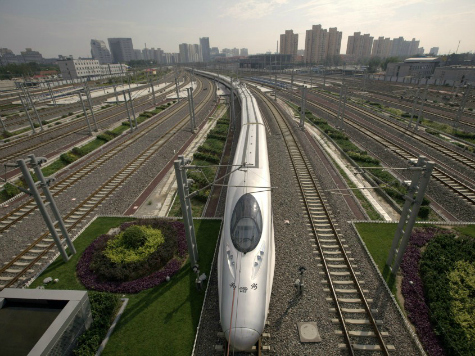Chinese experts are studying and considering plans to build a high-speed rail line that stretches from China to the United States.
If constructed, the project, titled the “China-Russia-Canada-America” line, would stretch out to cover over 8,000 miles of land.
China’s Beijing Times newspaper reported the line would start in China, continue into Siberia, then pass through an extensive, 125-mile tunnel underneath the Pacific Ocean, then run through Alaska and Canada to finally reach destinations within the continental United States. The total expected trip time is two days (36 hours) with the train traveling at an average speed of 220 miles per hour.
Some skeptics have doubted the plausibility of the high-speed rail plan. If constructed, the Bering strait tunnel would have to be by far the longest underwater tunnel on earth.
Others had concerns revolving around the financial aspect of the project. “China’s railway sector is still being haunted by deep debts. Therefore, even with the government’s support, it must persuade banks to lend a colossal amount of money,” said an expert at Beijing Jiaotong University.
The report does not mention whether Canada or the United States were consulted in developing plans for the project.
The China-United States rail line is one of four proposed plans to expand China’s high-speed rail coverage.
The Eurasia Line would cover London, Paris, Berlin, Warsaw, Kiev, Moscow, Kazakhstan, Khabarovsk(Russia), and would end in Manzhouli (China).
The proposed Central Line would have stops in Urumqi (China), Kazakhstan, Uzbekistan, Turkmenistan, Iran, Turkey, Germany, and “other countries.”
The Pan-Asian Line would canvas Kunming (China), Vietnam, Cambodia, Thailand, Malaysia, and Singapore. A Chinese official said the Pan-Asian line’s construction will start next month.
China has completed roughly 6,200 miles (10,000 km) of its own high-speed rail network, with plans to expand it to roughly 11,000 miles (19,000 km) by 2015.

COMMENTS
Please let us know if you're having issues with commenting.